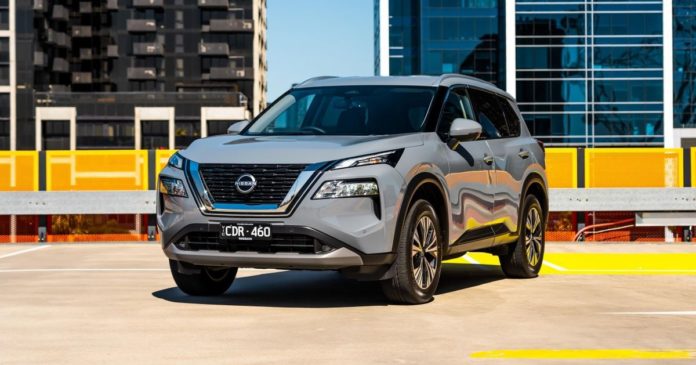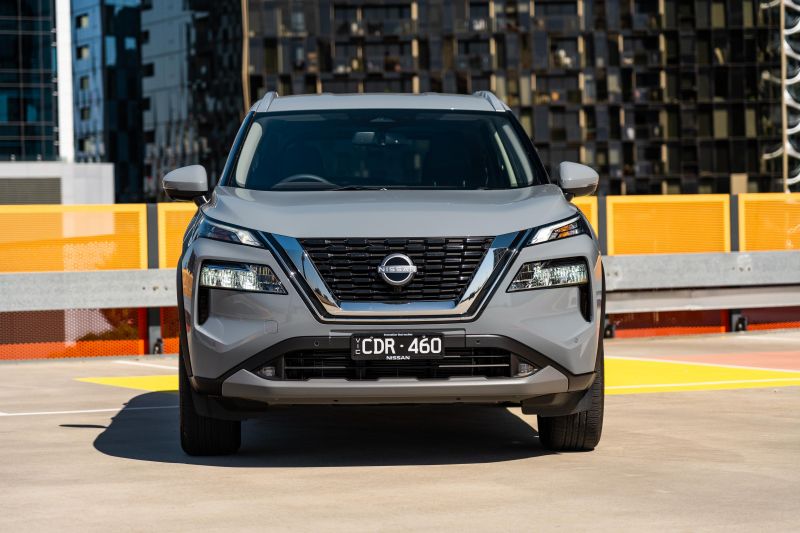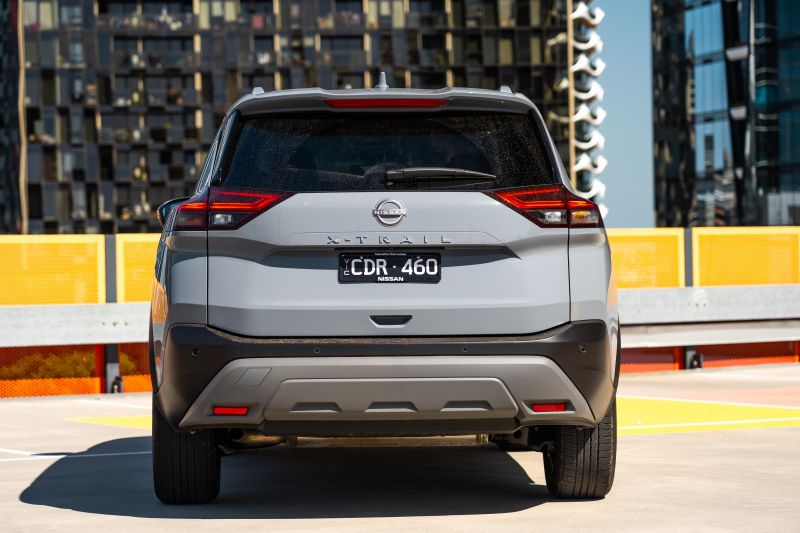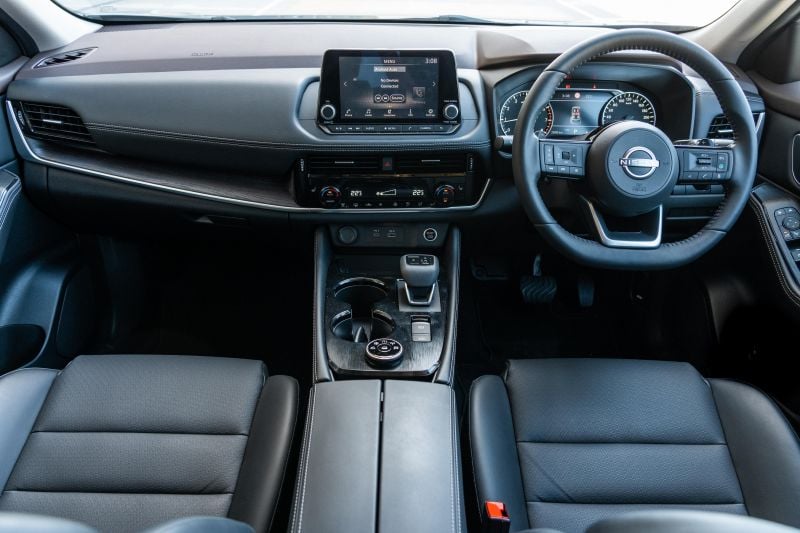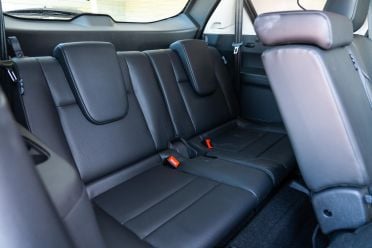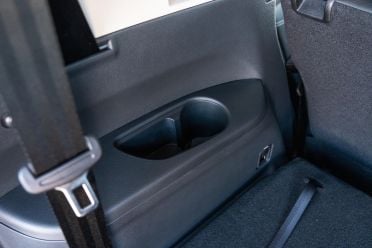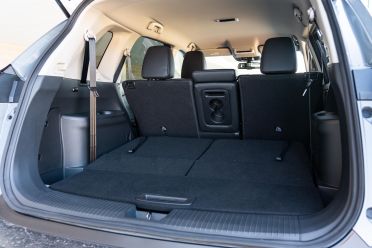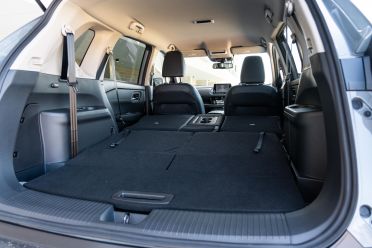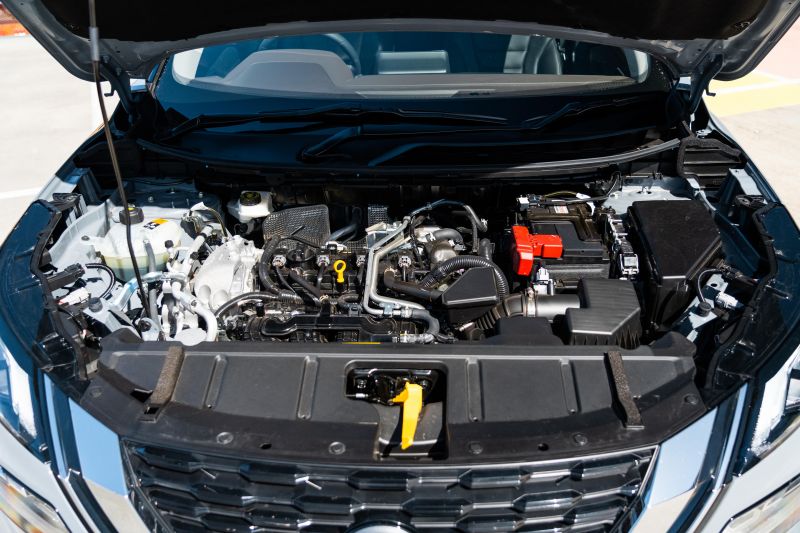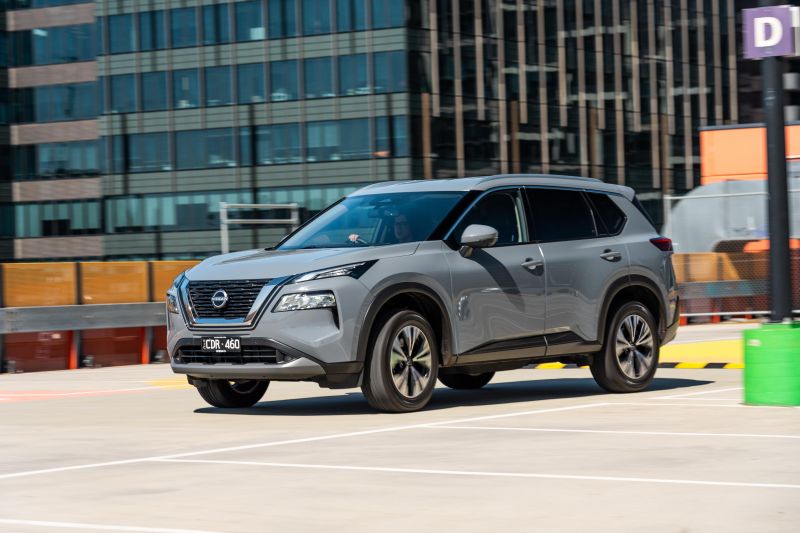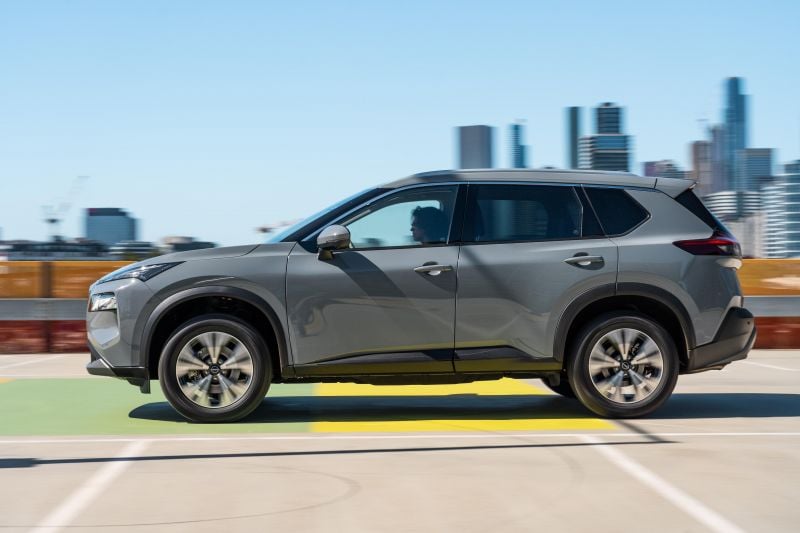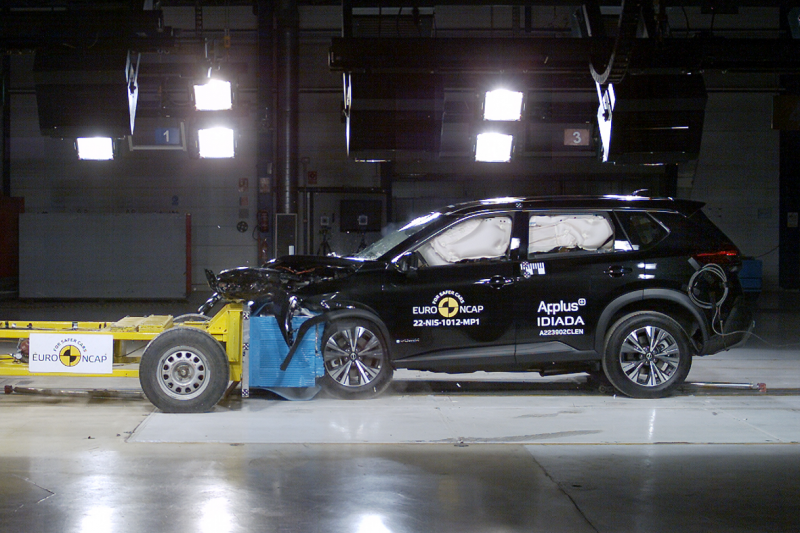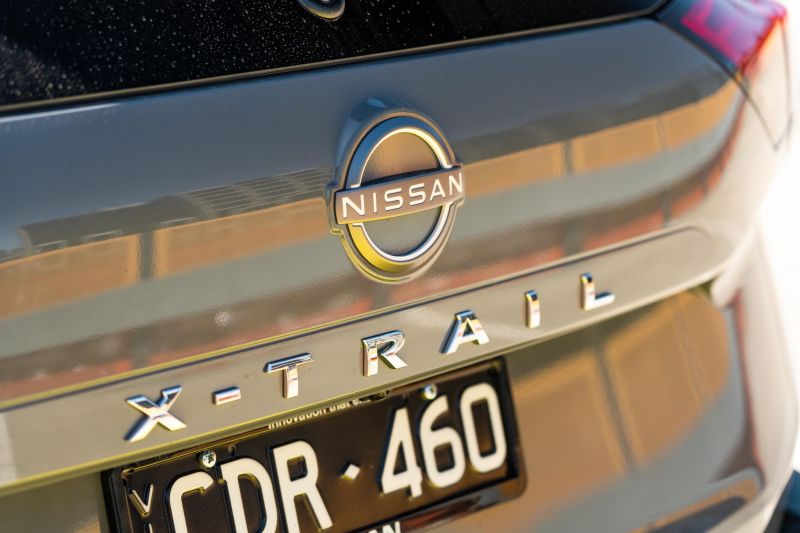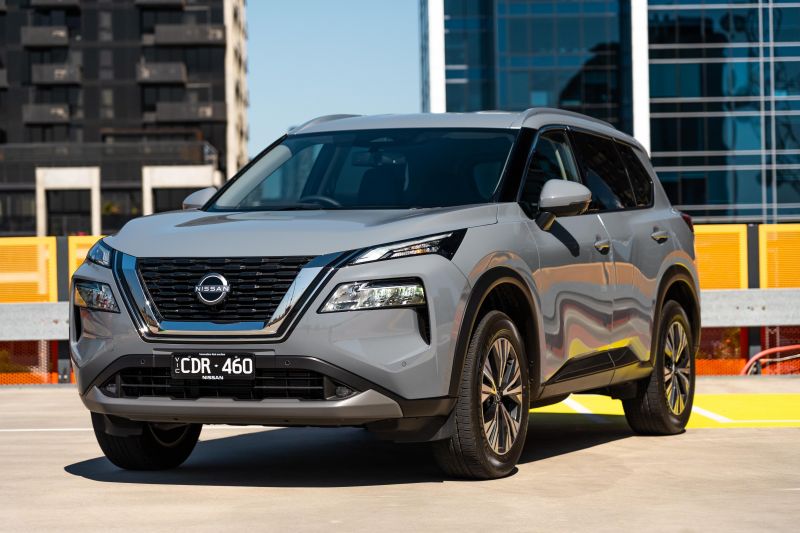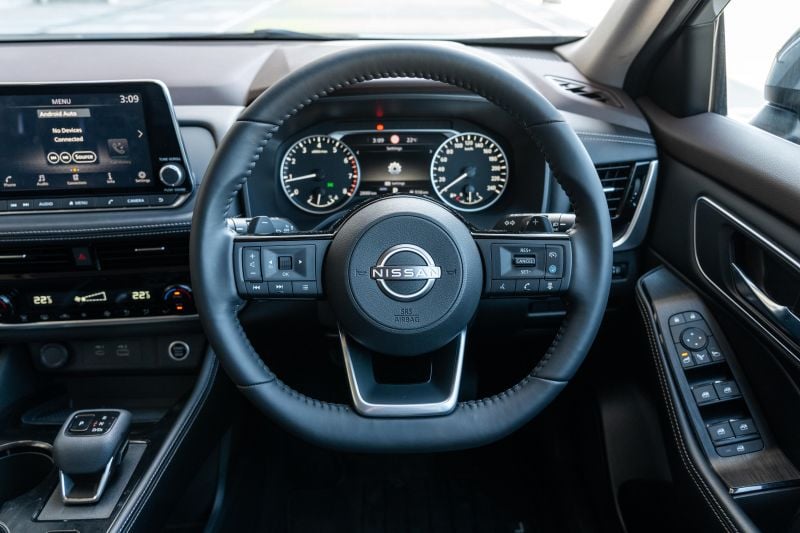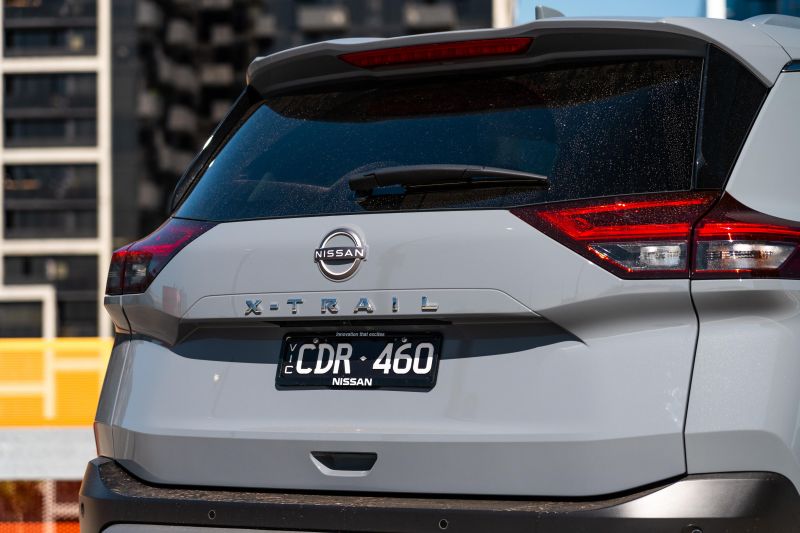The Nissan X-Trail is one of the most popular SUV nameplates in the world – and up until recently it was the world’s most popular SUV.
So it needs little introduction, especially given it’s been a staple in Australia since the original hit the scene way back in 2000.
Fast forward more than two decades and the Nissan X-Trail remains popular in Australia, if not quite as popular as it once was. It’s consistently beaten on the sales charts the Toyota RAV4 and Subaru Forester, as well as the Mitsubishi Outlander – not to mention the Hyundai Tucson and Kia Sportage.
This latest fourth-generation model was fashionably late to the party, only arriving Down Under late last year after being on sale in North America as the Rogue for almost 18 months. Australia sources its X-Trail from Japan, which was likewise well behind the US.
Like its popular predecessor, the latest X-Trail is on the larger side of the mid-size SUV segment and continues to offer five or seven seats, just like the vehicle you see here. It’s still one of few competitors in the class to offer a third row, alongside the related Mitsubishi Outlander, as well as the Honda CR-V which is about to be replaced by an all-new model.
While the trick e-Power series hybrid drivetrain is the headline act of the new-gen range, the petrol-powered 2023 Nissan X-Trail ST-L 4WD on test is the highest-spec seven-seat option in the local line-up.
Is this three-row crossover a top pick for families who need an occasional sixth and seventh seat?
How much does the Nissan X-Trail ST-L 4WD cost?
The X-Trail ST-L 2.5 4WD is priced from $46,790 plus on-road costs, $3100 dearer than the 2WD version with only five seats and $3200 less than the e-Power e-4orce (4WD) hybrid version which likewise is five-seat only.
Based on a Melbourne postcode, the car on test wears a base drive-away sticker of just over $51,000 with standard paint.
Price-wise the ST-L is aligned with mid- to high grades of most rivals, with the equivalent Mitsubishi Outlander Aspire AWD seven-seater priced from $45,740 before on-roads, while the upcoming Honda CR-V VTi L7 will be priced from $53,000 drive-away when it goes on sale on September 1.
You could also cross-shop with SUVs from the large segment, including the Hyundai Santa Fe (from $46,050), Kia Sorento (from $50,790 D/A), Skoda Kodiaq (from $54,990 D/A) and Volkswagen Tiguan Allspace (from $44,890).
2023 Nissan X-Trail pricing:
- Nissan X-Trail ST 2WD 5 seat: $37,250
- Nissan X-Trail ST 4WD 7 seat: $40,290
- Nissan X-Trail ST-L 2WD 5 seat: $43,690
- Nissan X-Trail ST-L 4WD 7 seat: $46,790
- Nissan X-Trail ST-L e-Power with e-4orce 5 seat: $49,990
- Nissan X-Trail Ti 4WD 5 seat: $50,490
- Nissan X-Trail Ti-L 4WD 5 seat: $53,490
- Nissan X-Trail Ti e-Power with e-4orce 5 seat: $54,690
- Nissan X-Trail Ti-L e-Power with e-4orce 5 seat: $57,690
Prices exclude on-road costs
What is the Nissan X-Trail ST-L 4WD like on the inside?
The latest X-Trail’s cabin is a world away from its predecessor, with a much more modern and upmarket design.
In ST-L specification the leatherette upholstery blends nicely with the stitched leatherette accents on the dashboard and door inserts, and there’s contrast with the brown surfaces on the upper end of the dash and doors which is straight out of Mazda’s playbook – they won’t be to everyone’s tastes, though.
The mid-spec variant gets analogue instruments flanking a 7.0-inch supervision display, while the floating tablet-style 8.0-inch infotainment touchscreen is missing satellite navigation compared to the lovely 12.3-inch display offered in the Ti and Ti-L versions.
It’s a shame that at $50,000 on the road the mid-spec X-Trail misses out on digital instruments and navigation, especially when the related Qashqai gets the higher-spec infotainment unit in ST-L guise.
Both displays are fairly nice to use and look at, if a little basic compared to the digitised cabins of the competition. A quick look at the 12.3-inch infotainment system in a Kia Sportage SX, for example, makes the X-Trail seem a little budget.
Apple CarPlay and Android Auto are wired in this specification, despite higher grades offering wireless functionality. The Mitsubishi Outlander’s 8.0-inch display offers both navigation and wireless smartphone mirroring with the same interface, too.
Anyway, comfort and storage are good for the segment, with plenty of nooks and crannies to stow your belongings – including a large shelf under the centre console – as well as big door bins and a deep bin under the twin-lid front-centre armrest.
The driver’s seat has electric adjustment in the ST-L, while both front seats are heated. Other upgrades over the base ST include automatic dual-zone climate control, an auto-dimming rear-view mirror as well as a leather-accented steering wheel.
Nissan has maintained its physical switchgear, even if there’s a minimalist approach to how they’re laid out. There’s a nice action to the climate controls and a nice damped feeling to the other buttons dotted about the place.
Other amenities include USB-A and USB-C ports as well as a 12V socket up front, and there’s a rubber-lined shelf for your phone under the centre stack but no wireless phone charger – not that there’s wireless smartphone mirroring anyway.
The second row remains an X-Trail strong point, and will no doubt be a drawcard for growing families.
There’s room for full-grown adults in the back, even behind taller drivers. I had plenty of head, knee and toe room even behind my preferred driving position, and I’m 6’1. The doors also open nice and wide, handy for parents.
Directional rear air vents feature, but not a third zone of climate like the Ti. The rear bench slides and reclines, with the middle seat folding down to reveal a centre armrest with cupholders.
ISOFIX and top-tethers will keep the kiddies and their child seats strapped in, while map pockets behind the front seats and bottle holders in the doors round out the second-row amenities.
Access into the third row is a little tight, and you need to slide the second row forward a bit to accommodate anyone with legs back there, to the point where the usually excellent second row becomes a bit pinchy.
The rearmost seats are best described as emergency only, and are only kid-sized.
You get adjustable headrests and storage pockets with bottle holders in the armrests, but again if you’re anywhere near the size of an average adult you’ll be in a knees-up position with your legs pressed up against the seat in front of you.
If you need regular use of seven seats, we’d suggest looking at something larger like a Kia Sorento or Mazda CX-8.
With regards to boot space, Nissan only quotes a 465-litre capacity for seven-seat models with the first and second rows in place, measured to the roof.
Nissan doesn’t quote a figure with the third row in place nor with the second row folded. A space saver spare wheel is located under the luggage area floor.
What’s under the bonnet?
Petrol-powered Nissan X-Trails feature a 2.5-litre naturally aspirated four-cylinder petrol engine.
Outputs are rated at 135kW (6000rpm) and 244Nm (3600rpm), with a CVT automatic (and paddles) fitted as standard in Australia. Front-wheel drive is standard on most X-Trail grades, but our tester had optional on-demand all-wheel drive.
Fuel consumption is rated at 7.8 litres per 100km for the 4WD variant, up 0.4L on the base 2WD version. CO2 emissions are a quoted 183g/km of CO2, up 9g/km on the 2WD.
All versions of the X-Trail 2.5 can run on cheaper 91 RON regular unleaded, while the fuel tank measures 55 litres. The X-Trail is homologated to Euro 5 emissions standards and also lacks idle stop-start technology unlike the related Qashqai’s 1.3-litre turbocharged petrol.
The petrol-powered X-Trail line-up is rated to tow up to 2000kg with trailer brakes, while roof load is rated at 100kg.
How does the Nissan X-Trail ST-L 4WD drive?
The petrol and CVT combination has been an X-Trail staple for a while, so this petrol model doesn’t really revolutionise the experience from behind the wheel.
That’s not to say it’s not an improvement, because it is, but that’s more or less down to the ride, handling and refinement as opposed to drivetrain performance.
Where the Qashqai at times felt a bit firm, particularly at the rear, the X-Trail’s family-focused pitch comes through in the way it handles city roads and undulating highways, offering a cosseting ride while maintaining good body control.
Once rolling it’s a comfortable and quiet place to spend time, with the CVT dropping revs significantly to keep the petrol engine humming away quietly in the background. Road and wind noise are fairly well suppressed.
If you’re gentle with it, the X-Trail gets off from a standstill in a pretty measured manner, but push it too hard and you’ll get the petrol engine shouting as the CVT flares revs to keep it in the power band. In saying that, Nissan’s latest XTronic CVT will ‘step’ through virtual ratios to mimic a conventional auto, which helps refinement.
If the X-Trail’s outputs don’t look spectacular on paper it’s because they aren’t. Like the Mitsubishi Outlander and other naturally-aspirated petrol engines in the segment, performance is adequate rather than pulse-racing.
The lack of turbocharging means peak torque doesn’t come in until 3600rpm, where most boosted alternatives hit peak shove under 2000rpm. If you don’t want to have the X-Trail revving hard, it’s best to drive in a relaxed manner.
Driven this way, it’s pretty smooth and agreeable, if a little uninspiring in how it performs. Loaded up with kids and stuff, it would also need to work harder than a turbo petrol or diesel rival, let alone the e-Power hybrid with its dual electric motors.
Handling-wise the X-Trail’s softly-sprung chassis and comfort-focused controls mean this isn’t as engaging to drive as something like a Mazda CX-5 or Volkswagen Tiguan. This is a car designed to be comfortable in all scenarios, so the accurate controls and light assisted feel are more than enough for the target buyer.
The AWD system as several drive and terrain modes, and the X-Trail should be one of the more capable soft-roaders off the beaten track, as demonstrated by its predecessor and the latest Outlander in our Medium SUV Mega Test.
With 205mm of ground clearance the X-Trail rides higher than most rivals this side of a Subaru Forester, and with its optional AWD system should be more than capable of navigating gravel trails, snow fields and the like, but if you’re looking for something more rugged you may need to look at a ladder-frame 4×4 SUV.
Nissan’s range of driver assistance features are at play in the ST-L, including a highway assistant combining adaptive cruise control and lane centring. It has an annoying habit of beeping when activated or a leading vehicle is detected, but it’s otherwise quite intuitive and natural in its inputs.
Blind-spot monitoring and rear cross-traffic alert are also handy for navigating gaps and merging lanes, and the 360-degree cameras with Moving Object Detection give you a surround view of the vehicle when parking, though the resolution of the cameras still isn’t a standout compared to rivals.
What do you get?
Nissan X-Trail ST
- 5 seats
- Auto LED head-and tail-lights
- Steering wheel paddle shifters
- 17-inch alloy wheels
- Auto-folding, heated mirrors
- Roof rails
- Reversing camera
- Rear parking sensors
- 8.0-inch touchscreen
- DAB+ radio
- 6 speakers
- 4 x USB points (1 x USB-A, 1 x USB-C front, rear)
- Apple CarPlay, Android Auto
- 7.0-inch TFT cluster display
- Fabric seats
- Space-saver spare wheel
- AWD and 7 seats optional
Nissan X-Trail ST-L adds
- 5 seats
- Privacy glass
- 18-inch alloy wheels
- Front parking sensors
- Surround-view camera
- Dual-zone climate control
- Synthetic leather-accented seats
- Heated front seats
- Power driver’s seat
- Fog lights
- Leather-wrapped steering wheel
- Auto-dimming rear mirror
- Sliding rear seats, 40:20:40 folding
- ‘Divide-N-Hide’ cargo area system
- ProPILOT with Lane keep assist
- AWD and 7 seats optional
-
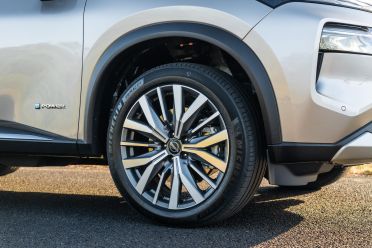
Ti-L e-POWER -
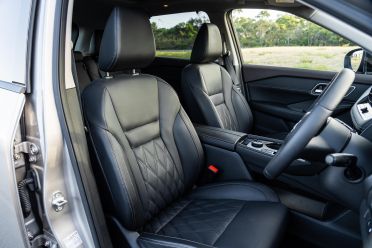
Ti-L e-POWER
Nissan X-Trail Ti adds
- AWD and 5 seats
- 19-inch alloy wheels
- Panoramic sunroof
- Power tailgate
- Adaptive Matrix LED headlights
- Digital rear-view mirror
- Rain-sensing wipers
- Tri-zone climate control
- Real leather-accented seats
- 12.3-inch touchscreen infotainment system
- Satellite navigation
- Wireless phone charger
- Wireless Apple CarPlay
- 12.3-inch digital instrument cluster
- 10.8-inch projecting head-up display
- 10-way power front passenger seat incl. power lumbar
- Ambient lighting (console only)
- Two-tone black painted roof optional
Nissan X-Trail Ti-L adds
- Hands-free power tailgate
- Reverse-tilt power mirrors with memory
- Remote engine start
- Heated steering wheel
- Quilted Nappa leather upholstery
- Driver’s memory seat presets
- Heated second row outboard seats
- Rear door sunshades
- Ambient interior lighting (doors)
- Side mirrors with tilt-to-reverse
- Bose 10-speaker sound system
- Two-tone black painted roof optional
Colours
Standard
Premium: $700
- Ivory Pearl
- Brilliant Silver
- Ceramic Grey
- Gun Metallic
- Diamond Black
- Champagne Silver
- Caspian Blue
Two-tone: $1200
- Ivory Pearl with Black roof
- Ceramic Grey with Black roof
- Champagne Silver with Black roof
- Caspian Blue with Black roof
- Sunset Orange with Black roof
Is the Nissan X-Trail ST-L 4WD safe?
The new X-Trail scores a five-star ANCAP safety rating – based on crash testing of the related Nissan Qashqai in 2021 – this now includes e-Power versions as well.
The X-Trail scored 91 per cent for adult occupant protection, 90 per cent for child occupant protection, 74 per cent for vulnerable road user, and an excellent 97 per cent for safety assist.
Standard features on all grades:
- 7 airbags incl. front-centre airbag
- 3 x top tether points, 2 x ISOFIX points
- Adaptive cruise control
- Automatic high-beam
- Autonomous emergency braking (AEB)
- Pedestrian, Cyclist detection
- Junction assist
- Reverse AEB with Pedestrian detection
- Blind-spot assist
- Lane departure warning
- Lane keep assist
- Reversing camera and sensors
- Traffic sign recognition
- Trail sway control in ESP
ST-L and above add:
- 360-degree cameras incl. Moving Object Detection
- ProPILOT (lane centring)
Ti and above add:
- Adaptive LED headlights
- Digital rear-view mirror
How much does the Nissan X-Trail ST-L 4WD cost to run?
The X-Trail is covered by a five-year, unlimited-kilometre warranty.
Nissan also throws in five years of roadside assistance with purchase. Scheduled maintenance for all X-Trail models, meanwhile, is a disappointingly short 12 months or 10,000 kilometres – whichever comes first.
You can prepay for a servicing package instead of paying as you go, available for three-, four- or five years. The X-Trail AWD costs for $1228, $1756 and $2124 respectively, which makes it the most affordable powertrain variant to maintain.
It’s a shame Nissan doesn’t extend the servicing intervals to 15,000km to match the bulk of its rivals, including the related Nissan Qashqai as well as the X-Trail’s other platform mate – the Mitsubishi Outlander.
Real-world fuel economy was adequate in mixed driving, with the X-Trail returning an indicated 8.9L/100km over a mix of peak-hour commuting and highway stints, though usually with just one person on board. The e-Power can drop that closer to 6L/100km, and other electrified rivals can do less again – though few offer seven seats.
CarExpert’s Take on the Nissan X-Trail ST-L 4WD
The new X-Trail is quite impressive in its upper grades, but the low- and mid-spec offerings are a bit uninspiring.
Where the ST-L specification should be a sweet spot, it feels more like a middle child in 4WD trim. The ST grades are sharper value, while the Ti and Ti-L add some premium flourishes.
I occasionally scratch my head reading the X-Trail’s spec sheet, and wonder what the product planners were thinking. Surely the ST-L should have satellite navigation and wireless smartphone mirroring, while the seven-seat point of difference is limited to such specific grades and drivetrain combinations… why?
AWD for this kind of car is pretty redundant these days unless you encounter slippery conditions or soft-road often, and for the $3000 price premium and added fuel use this X-Trail feels like it would be better as a 2WD and seven-seat proposition for $2000-$3000 less.
Likewise, the ST-L e-Power for $3000 more would be a perfect hybrid unicorn in our market if it offered three rows, and yet it doesn’t in Australia. It’s available from the factory, and is offered in Europe and Japan – what gives?
I’d still take the X-Trail over the Outlander at this price point, for its nicer interior and more refined on-road manners, but the next Honda CR-V VTi L7 looms as a new benchmark with its turbocharged powertrain and higher level of specification compared to this mid-spec X-Trail.
If you like the X-Trail and don’t need the seven seats, I’d suggest looking at one of the higher Ti or Ti-L grades for their premium ambience, while the e-Power hybrids up performance as well as efficiency.
Hopefully Nissan adjusts the specification of the ST-L moving forward to make it more recommendable against an ever-increasing amount of competition.
Click the images for the full gallery
MORE: Everything Nissan X-Trail

